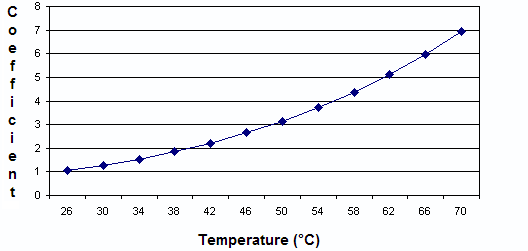Cooling the HDD
With the appearance of the hard drives spinning the magnetic disk at 7200 rpm or faster users could recognize a high heat generation during HDD's work period. The sources of heat are the positioning system of magnetic heads and drive spindle motor located in the hermetic block, not the chips on the controller board. Magnetic disks are more sensitive to the higher temperature since degaussing and, therefore, data loss occurs faster when heated. It is expressed in the direct dependence of the count of hours of MTBF.
Dependence of the operating time of temperature

The temperature sensor was not included in the required minimum of S.M.A.R.T. attributes, so manufacturers started using different S.M.A.R.T. attribute numbers containing information about temperature. SMARTHDD can automatically detect differences in device implementation and cast temperature value to the uniform format.
For better cooling hard drive must not be pressed to the case on the top or at the bottom since this can complicate air circulation necessary for active cooling. Due to the same reason, it's necessary to avoid wires interlaces nearby the drive. The decrease of AAM and APM levels assists in temperature lowering. At high temperature, it is a need to install additional fan providing active (forced) hard disk drive cooling into a computer. The reason which can make the user reject additional cooling is the noise from a substandard fan or a high price on a qualitative cooling system, though usually, a sound from the other fan is practically inaudible, in particular against the background of other fans (central processor unit, video, supply unit).